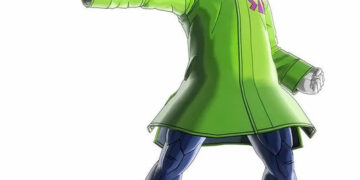Manufacturing has evolved tremendously over the years, with CNC (Computer Numerical Control) machining emerging as one of the most significant advancements in modern production. While traditional machining still plays a role in certain areas, businesses worldwide are increasingly adopting CNC technology for its precision, speed, and efficiency. But what exactly sets CNC machining apart from traditional methods? In this article, we’ll dive deep into the key differences between CNC machining and traditional machining, helping you understand which is the right choice for your manufacturing needs.
What is Traditional Machining?
Traditional machining refers to manual operations performed by machinists using machines like lathes, milling machines, and drill presses. In this process, the machinist physically controls the machine’s movements using handwheels, levers, and dials to cut and shape materials. The accuracy and quality of the part depend largely on the operator’s skill and experience.
While this method has been used for decades, it is time-consuming and labor-intensive, making it less efficient for modern high-volume production.
What is CNC Machining?
CNC machining, on the other hand, uses computerized systems to control machine tools. The machinist programs the machine using CAD (Computer-Aided Design) and CAM (Computer-Aided Manufacturing) software. Once programmed, the CNC machine operates automatically, cutting and shaping material with unmatched precision and consistency.
Unlike traditional machining, CNC machines can run continuously with minimal human intervention, making them ideal for large-scale, complex manufacturing projects.
CNC Machining vs. Traditional Machining: 7 Key Differences
1. Level of Automation
- Traditional Machining: Completely manual, requiring constant operator involvement.
- CNC Machining: Fully automated once the program is set, reducing the need for supervision.
Advantage: CNC machining improves efficiency and frees up labor for other tasks.
2. Precision and Accuracy
- Traditional Machining: Accuracy depends on the machinist’s skill, leading to human error and inconsistencies.
- CNC Machining: Provides micron-level precision and consistent results in every part.
Example: Aerospace and medical industries prefer CNC machining for its tight tolerances.
3. Complexity of Designs
- Traditional Machining: Limited to simple geometries and basic shapes due to manual control.
- CNC Machining: Can produce complex, multi-axis parts with intricate details.
Example: CNC machines can create parts with internal curves, undercuts, and 3D surfaces that are impossible with manual machines.
4. Speed and Efficiency
- Traditional Machining: Slower because every operation requires manual adjustments.
- CNC Machining: High-speed cutting and 24/7 operation result in shorter lead times.
Impact: CNC machining supports Just-In-Time (JIT) manufacturing, reducing inventory costs.
5. Cost Considerations
- Traditional Machining: Lower initial investment in machines, but higher long-term labor costs.
- CNC Machining: Higher upfront cost for machines and software, but lower operating costs over time due to automation and reduced errors.
Best For: High-volume production favors CNC machining for cost efficiency.
6. Skill Requirements
- Traditional Machining: Requires highly skilled machinists for every part.
- CNC Machining: Requires programming knowledge but less manual effort during production.
Result: CNC machining reduces dependency on individual skill levels, ensuring consistent quality.
7. Repeatability
- Traditional Machining: Difficult to replicate identical parts manually.
- CNC Machining: Produces thousands of identical components with zero variation.
Benefit: Perfect for industries that require mass production with strict standards.
Advantages of CNC Machining Over Traditional Machining
- Higher Precision: Perfect for aerospace, automotive, and medical industries.
- Scalability: Easy to ramp up production without losing quality.
- Less Waste: Advanced cutting strategies reduce material waste, lowering costs.
- Versatility: Works with metals, plastics, composites, and more.
- Automation: Enables lights-out manufacturing, running machines 24/7 without supervision.
When is Traditional Machining Still Useful?
Despite its limitations, traditional machining still has a place in modern manufacturing. It is ideal for:
- Simple, low-volume parts where CNC setup costs may not be justified.
- Repairs and modifications, especially for large or heavy components.
- Shops without access to CNC technology or when skilled manual machinists are available.
The Future: CNC Machining and Industry 4.0
CNC machining is continuously evolving with AI, IoT, and robotics integration. Smart CNC machines can:
- Monitor performance in real-time
- Predict maintenance needs before breakdowns
- Automatically optimize cutting paths for efficiency
This makes CNC machining the foundation of smart factories and a critical technology for future-ready manufacturing.
Conclusion: Which One Should You Choose?
The choice between CNC machining and traditional machining depends on your project’s complexity, budget, and production volume:
- For high precision, large-scale, and complex parts, CNC machining is the clear winner.
- For simple, low-volume tasks or repairs, traditional machining can still be cost-effective.
However, as industries move toward automation, digitalization, and global competitiveness, CNC machining is rapidly becoming the preferred solution for modern manufacturing.



















